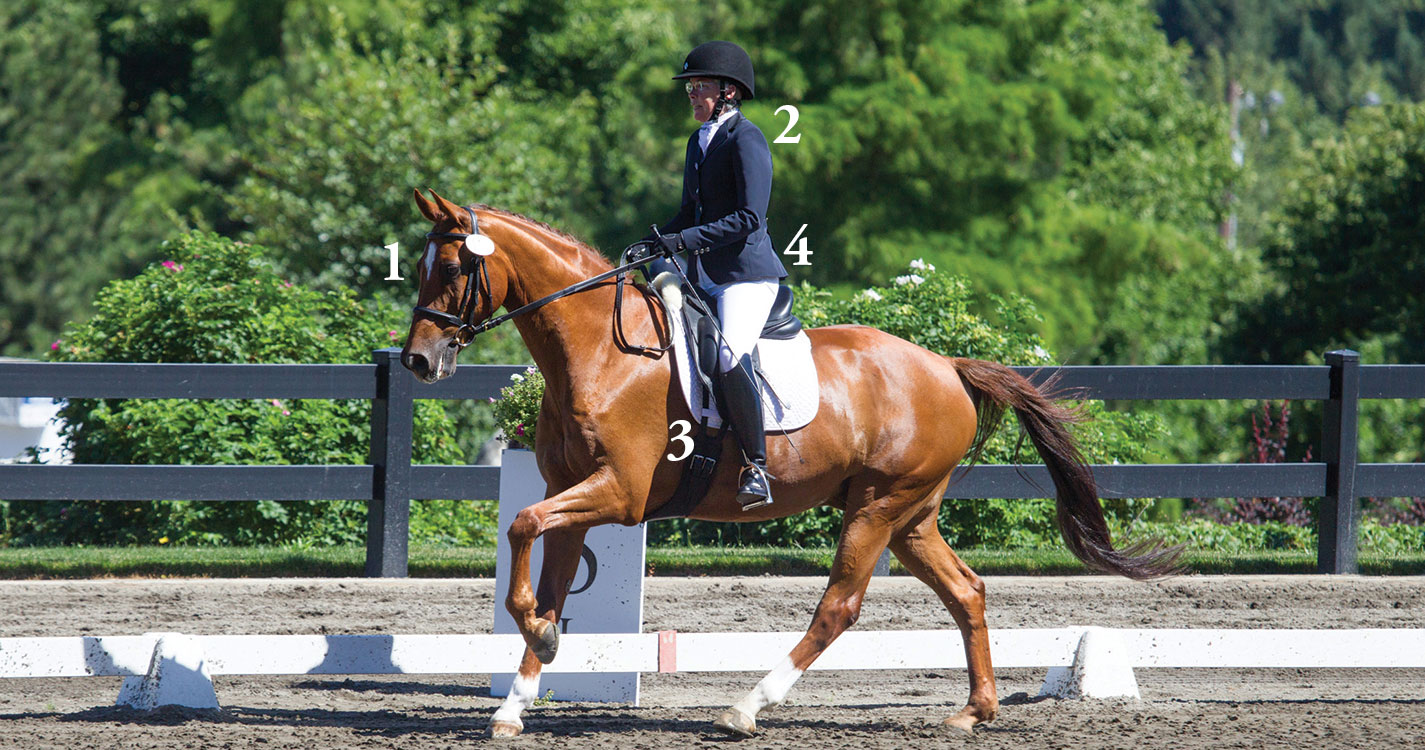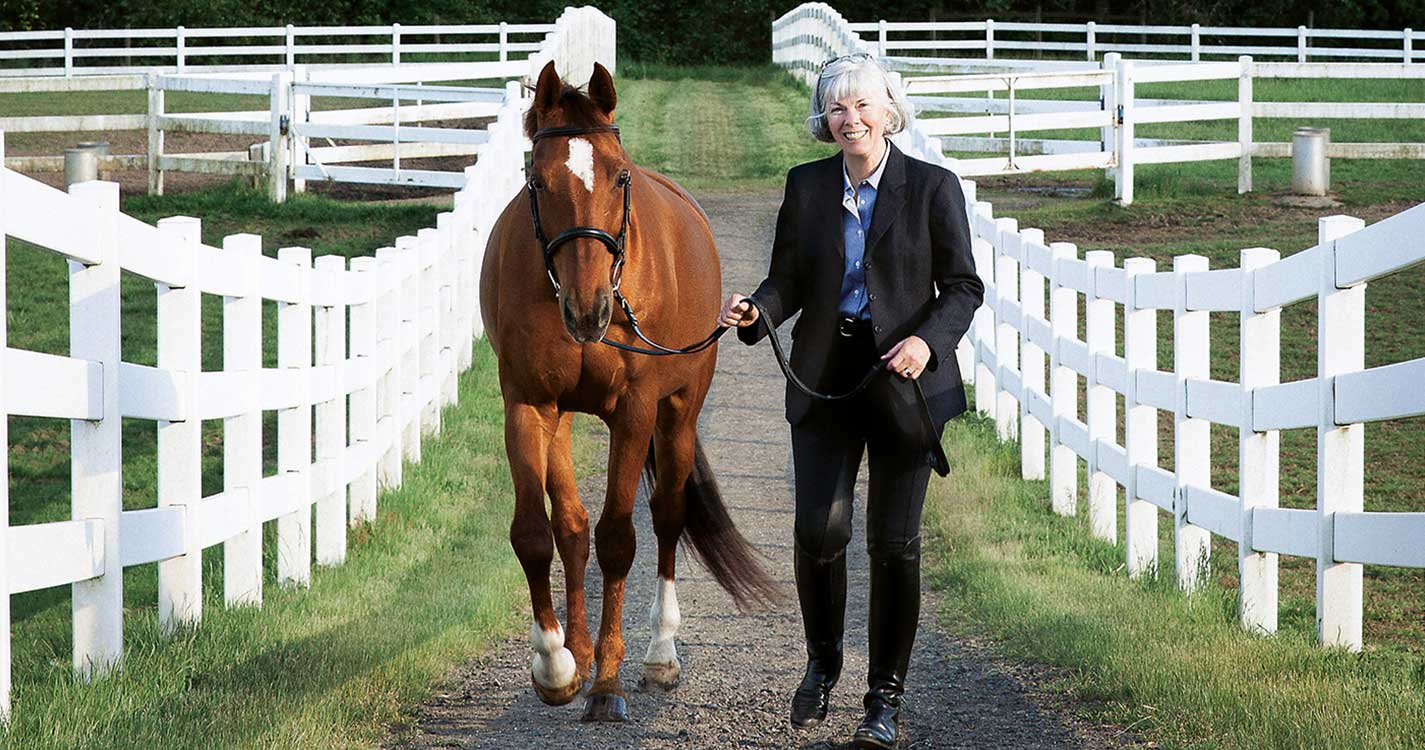About ten years ago, Debra Ringold, dean of Atkinson Graduate School of Management, took up dressage — a sport full of grace, poise and precision in which a rider guides a horse through set moves around an arena.
Despite one serious fall that resulted in seven broken ribs, Ringold loves the physical, mental and emotional challenge of dressage. “When I ride, I completely forget about my responsibilities. I feel like a 10-year-old — relaxed and joyous,” she says. “Although, concentration is critical. Not paying attention to the horse’s mood or behavior can be dangerous.”
Ringold likens dressage to a cross between ballet and gymnastics floor exercises. Moving at a walk, trot or canter, horses glide elegantly through difficult maneuvers. In performances often set to music, horses might walk backwards, skip in time to the beat or cross legs while moving forward and sideways simultaneously.
Ringold first learned to ride as a child growing up in the Texas Panhandle, competing in pole-bending and barrel racing until she went to college. Although stylistically different, dressage requires the same depth of trust and communication between horse and rider.
Since taking up dressage, Ringold has ridden three horses and competed in 30 shows throughout Oregon, Washington and Idaho. She placed 20th in the nation in 2015 and 2017 for competitors aged 50 and over at the training level.
Ringold loves the challenge of competition and learning new skills. But she’s noticed one similarity between management and dressage: “It’s like being a supervisor and managing a team. When we do well in a competition, Larry, my horse, gets the praise; if we don’t do well, it’s my responsibility.”
Some of the tools Ringold uses in dressage
1. Her horse
Larry (short for his registered name, Valary), whom Ringold calls her partner, is a 16-year-old Dutch Warmblood. Standing 16 hands and one inch tall, Larry weighs 1,200 lbs. Nonetheless, Ringold describes him as a “nervous” horse who can lose focus and get distracted.
2. Her body
Physical communication between horse and rider is critical in dressage. Ringold uses her hands, arms, legs, seat, ankles and heels to guide Larry through changes of gait or movements, as well as to read his body language and reactions. In addition, dressage riders are judged on their upright, composed posture.
3. Horse equipment
Larry wears a special, thin saddle, a pad, protective boots and shin guards.
4. Riding clothes
Like Larry’s equipment, Ringold’s clothing — including helmet, boots and breeches — is designed both for safety and for close contact that maximizes communication between horse and rider.
This article was originally published in the spring 2018 issue of Willamette magazine.


